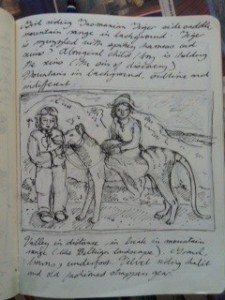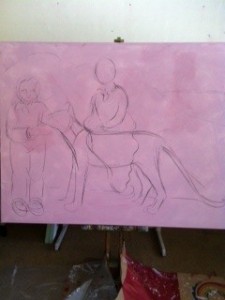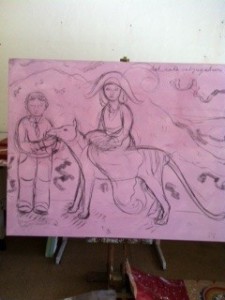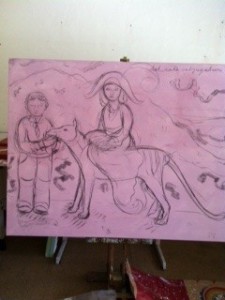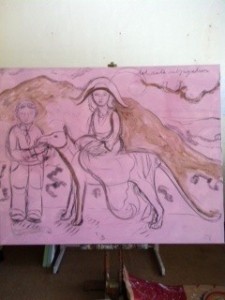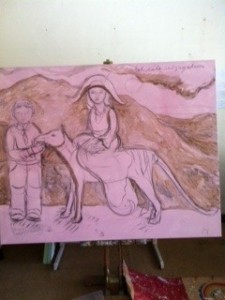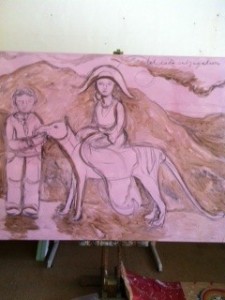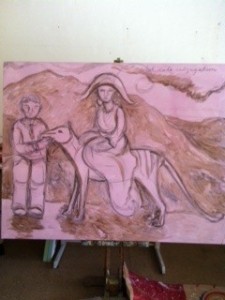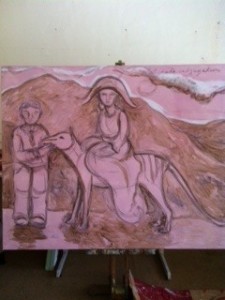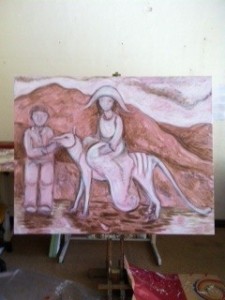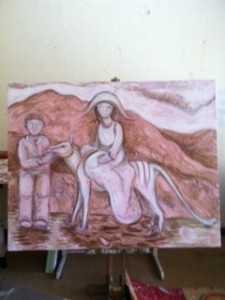Day two and three in the studio (not consecutive) involve more layers of acrylic paint and fiddling with the drawing…
It’s about this stage that I started missing oil paint, its sticky richness and intensity of colour. The acylic is fine for the underpainting, helps seal the canvas and means that you’re not waiting around for ages until it dries. It’s nice to handle, non toxic, ideal for mucking around with image and composition, but it just doesn’t have that…. thing.
I think it’s about this point that I started using oil paint over the top of the dry acrylic underpainting.
Me!
Reference material: the poor, doomed thylacines (Tasmanian Tiger).
What the painting looked like at the end of day three.
Came into the studio on day four and decided that I was creating major compositional, not to mention aesthetic, problems for myself. The mountain range behind the figures was originally planned to open up, on the right, into a wide bowl shaped valley. This would have given the painting some depth, a sense of space. However with the mountain rapidly turning into a one dimensional granite escarpment, and the low stone wall acting as another visual barrier, the whole thing was getting visually claustrophic. I dragged out some of my holiday snaps from Tasmania and decided to repaint the background using an actual mountain view as reference.
The first stage involved repainting the sky with pale greys.
The next phase involved working out the tonal gradations and colours of the mountain ranges in the background. Using various mixes of warm grey at this point, mixed with some burnt umber, a bit of paynes grey, some black, titanium white, yellow, chromium green oxide and a couple of miscellaneous tubes of grey paint that my Aunty Pam gave me.
The final stage of day four, which was a short day in the studio. It still looks like a mess, but I’m much happier with the composition. Next step is to work on the rock wall in the foreground, using the following image as reference (it’s outside a country church in Tasmania).
More reference material…
After this I’ll go hunting for figure reference material for the children (probably involves photographing Sophie and one of her mates) and costume reference.





















